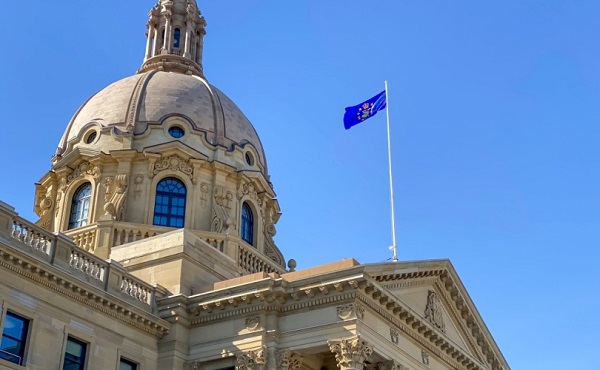Bruce Dowbiggin
Will Cable Cord Cutting Shock Pro Sports Back To Its Senses?
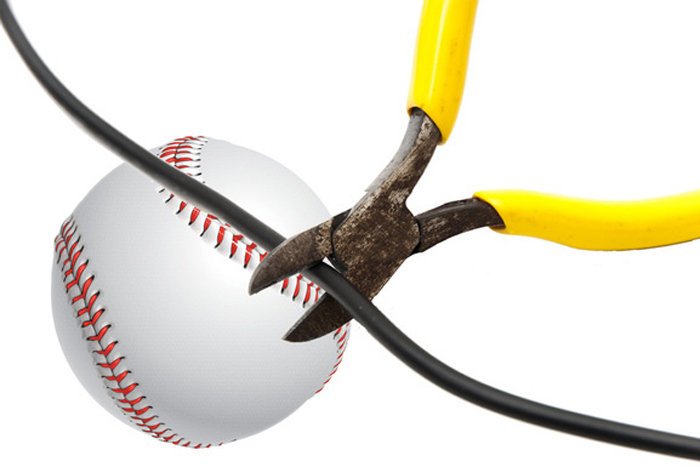
If there’s one constant in modern sports it’s bewilderment at how high salaries have risen for elite athletes. Where a million dollars a year was once the “unheard-of” threshold for salaries, today’s stars are easily taking home 20, 40, even 50 million a year under the new economy in sports. Even college athletes, once forbidden to accept remuneration, are cashing in millions for their name, image or likeness.
When people complain about overpaid athletes to IDLM we simply say the money is in the business, who else do you think should get the cash? Ditto for franchise values, where the Denver Broncos recently sold for a staggering $4.65 B. and the Washington Commanders might fetch $6B.
Largely the infusion of riches in pro sports has come from TV and digital-rights contracts between leagues and regional sports networks (RSN). Those RSNs are the carriers of the local and regional teams. Packaged through cable or satellite carriers they deliver valuable programming dollars to leagues. And for smaller media markets they are a vital source of revenue to keep up with the big boys whose ancillary revenues are pumped by many more customers.
As just one example, the MLB St. Louis Cardinals are currently earning about $66 million a year from their 15-year, $1B deal they signed with Fox Sports in 2015. There are 18 other teams on Sinclair/Diamond local TV deals, all of whom rely on RSNs to play New York salaries in Pittsburgh or Kansas City.
In Canada, as opposed to the American model, regional sports contracts are held directly by either TSN or Sportsnet, national carriers. The monopoly status has suppressed revenues to Canadian NHL, MLB or NBA teams relative to the deals cut in large markets such as New York’s tri-state area, southern California or Chicago.

Recently TV rights packages values were boosted by the arrival of Amazon, YouTube and Google which began to compete with traditional networks for U.S. broadcast rights. But now RSNs are threatened by the cord-cutting trend that sees American and Canadian consumers dumping their traditional bundlers of services to go à la carte digital directly with the producers of programming. ( In Canada the DAZN network has gone head-to-head with TSN for NFL games on a digital deal with the league.)
This past week the American cable giant Comcast reported a year-over-year 11 percent loss in its customer base. That’s about two million Americans saying “I can do without the middle men and the useless channels. I want to subscribe directly to the producers of the material I want to see.” From a peak of 110.5 million customers in 2013 the Comcast market is estimated to drop as low as 65 million customers by 2025.
In part this is consumers shedding programming bundles they never watch and bloated subscription fees as they tighten their belts. It’s also a reflection on the Netflix streaming revolution sparked by Covid-19 lockdowns that saw locked-down consumers get used to the convenience of directly streaming programming from Netflix or Amazon Prime or Disney without paying for a raft of useless channels.
Advertisers have noticed, too. They are headed to streaming services, where their messages can be more targeted to desired audiences than cable TVs scattershot approach.
The impact is being seen in the U.S. where Diamond Sports Group, which controls a huge portion of the pro sports RSNs, is said to be headed to bankruptcy court to restructure its $8.6B in debt. “There are a lot of business and financial terms and policies to work through,” says Deadspin, “but the long and short of it is that DSG is likely going to skip an interest payment it owes, which should be enough for them to get to the bankruptcy claim they’ve been rumored to be after for a while now.”
Bloomberg reported that if they file for bankruptcy it could “potentially put at risk crucial broadcasting rights revenues” for major North American sports networks. Greg Boris, a sports management professor at Adelphi University summed up the looming disaster for pro sports. He told The Score that RSNs have “been a golden goose. You remove cable TV from the scenario, and franchises are worth a fraction of what they are today, players make a fraction of their salaries today… the boom has been going on for almost 30 years. But the vast majority of the people that pay never watch (services they purchase). That’s been the model.”

Leagues are now investigating what to do if the RSN model collapses. Currently the leagues operate direct streaming services for customers wishing to watch out-of-town games not involving their local team. They could simply add the RSN rights too these streams.But direct-to-consumer can be very costly. The Disney+ operation was thought to be a slam dunk, but now management at Disney admits it will be a few years before the operation gets out of the red. American carrier Comcast launched the Peacock network as an outlet for NBC content. It lost $2.5B in 2022 and projects to lose another $2B in 2023. Similar startups such as CBC Gem have been flops.
Direct-to-consumer is also not the easy money machine that RSNs were. If a league or a team operates a direct customer service it takes on the responsibility of signing up and maintaining its customer base. That means dealing with the fickle fans who might drop his/ her package to an NHL, NFL, MLB or NBA team for a few years till the club improves.
That could be a disaster for underperforming teams like MLB’s Pirates or NHL Vancouver Canucks who had the assurance that, while their programming sucked, the other offerings on the cable package were worth customers retaining the service. Direct-to-consumer could, however, be a ray of hope for fans of bad teams that force clubs to finally get serious about producing a winning product.
This potential financial shortfall is probably one of the reason pro sports has so fervently embraced sports betting— to the annoyance of many fans. If the TV money goes, they’ll need every dollar they can find to pay out the contracts they’ve been issuing with impunity the past decade.
Sign up today for Not The Public Broadcaster newsletters. Hot takes/ cool slants on sports and current affairs. Have the latest columns delivered to your mail box. Tell your friends to join, too. Always provocative, always independent. https://share.hsforms.com/16edbhhC3TTKg6jAaRyP7rActsj5
Bruce Dowbiggin @dowbboy is the editor of Not The Public Broadcaster A two-time winner of the Gemini Award as Canada’s top television sports broadcaster, he’s a regular contributor to Sirius XM Canada Talks Ch. 167. Inexact Science: The Six Most Compelling Draft Years In NHL History, his new book with his son Evan, was voted the seventh-best professional hockey book of all time by bookauthority.org . His 2004 book Money Players was voted sixth best on the same list, and is available via http://brucedowbigginbooks.ca/book-personalaccount.aspx
Bruce Dowbiggin
Eau Canada! Join Us In An Inclusive New National Anthem
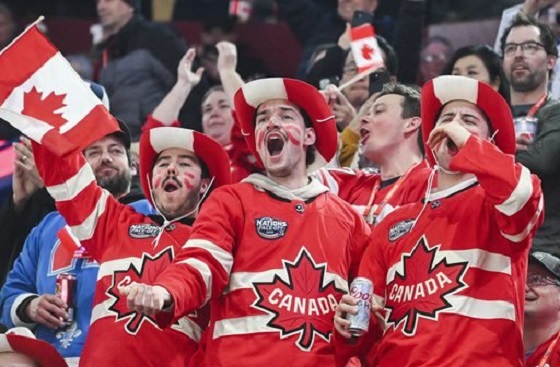
This past week has seen (some) Canadians celebrating their heritage— now that Mike Myers has officially reinterpreted Canadian culture as a hockey sweater and Mr. Dressup. This quick-change was so popular that Canadian voters even forgot an entire decade of Justin Trudeau.
In the United States, the people who elected Donald Trump– and not Andrew Coyne– to run their nation celebrated Independence Day with stirring renditions off The Star Spangled Banner, although few could surpass the brilliant performance of the song by the late Whitney Houston at the 1991 Super Bowl.
The CDN equivalent is some flavour of the month changing the words to O Canada at the Grey Cup game. Canada’s national anthem has always been open to interpretation by people who may or may not have Canada in their hearts. At the 2023 NBA All Star Game Canadian chanteuse Jully Black became the latest singer to attempt a manicure to the English lyrics of O Canada, penned for the 1880 Saint-Jean-Baptiste Day ceremony ( Calixa Lavallée composed the music, after which words were written by the poet and judge Sir Adolphe-Basile Routhier. The English lyrics have “evolved” over the years, just like the dress code for the CDN PM..)

Black amended the first line from “our home and native land” to our home ON native land”. Because something-something. But this creative license is nothing new. Unlike Chris Stapleton, Marvin Gaye or Whitney Houston with the Star Spangled Banner, interpreters of O Canada have seen fit to amend the lyrics to their sensibilities. Roger Doucet, famed anthem singer of the Montreal Canadiens in the 1970-80s, tried to add the words “we stand on guard for truth and liberty” in place of the first “we stand on guard for thee”.
In 1990, having nothing better to do, Toronto City Council voted 12 to 7 in favour of recommending that the phrase “our home and native land” be changed to “our home and cherished land” and that “in all thy sons command” be partly reverted to “in all of us command”. (The latter was officially adapted.)
While those attempts had mixed outcomes it appears it’s just a matter of time till Ms. Black’s class-conscious culling of the words is accepted. Being generous we here at IDLM thought we’d short-circuit piecemeal attempts to create a throughly Woke version of the anthem that would last till the latest fad come along. Herewith our 2023 definitive O Canada that even— maybe only— Justin Trudeau could love:
“O Canada” (Ignores the French fact in our culture) Change to “Eau Canada”
“Our home on native land” (ignores indigenous land claims) Change to “Get off our land, settlers”
“True patriot love in all of us commands” (Only true patriot love? There were officially 78 kinds of relationships in Trudeaupia. And commanding love?) Change to “Love the one you’re with”.
“With glowing hearts we see thee rise” (rise suggests triumph of white triumphalist dogma) Change to “Non judgementally we oppose the crushing impacts of Euro-based autocracy”
“The true north strong and free” (How can anyone be strong or free when we support America’s killing fields?) Change to “Heteronormative thinking must be stamped out at our borders. If we even have borders anymore.”
“From far and wide” (Body shaming) Change to “Obesity is a disease that is not helped by putting it in the national anthem.”
“O Canada” (biased against A, B, AB blood types) change to “Science Must Be Believed”
“We stand on guard for thee” (Spreads hate against the non ableist community) Change to “Please remain seated.”
“God keep our land” (God? God? What is this, the Reformation) “Change to “It’s your thing”
”Glorious and free” (Glorious harkens to the bourgeois subjugation of Indigenous thought processes by white Christian priests) Change to “A genocidal state if there ever was one”.
“O Canada we stand on guard for thee/
O Canada we stand on guard for thee” The denial of trans rights is used twice here to emphasize the intolerable burdens faced by people of the LGBTQ2R community as they seek respect and compensation for the evils of the founding oppressors.) Change to “Eau Canada, after 6.5 hours of intensive lectures on the gender, race and dissociative application of class war on your citizens you may someday come to understand that this song is a manifestation of your bigotry and exploitation of minorities— and why rhyming lines like “thee and free” is the work of the devil or J.K. Rowling, whomever comes to mind first.”

There. That wasn’t so tough, was it? Flows trippingly off the tongue like Mark Carney refusing a special inquiry into China buying the electoral process. Or perhaps we should simply accept a literal translation of the original French lyrics:
“O Canada!
Land of our ancestors
Glorious deeds circle your brow
For your arm knows how to wield the sword
Your arm knows how to carry the cross;
Your history is an epic
Of brilliant deeds
And your valour steeped in faith
Will protect our homes and our rights.”
Yikes. That’s downright fascistic. But it’s Quebec, and we have to allow them their peccadilloes. So circle your brow with glorious deeds, grab a cross and a sword and valour steeped in faith. And remember we must be adaptable in the new era.
Unless it’s Alberta using the adapting to fuel its CO2-belching machines. In which case it’s man the battlements and follow Mike Myers into the fight.
Bruce Dowbiggin @dowbboy is the editor of Not The Public Broadcaster A two-time winner of the Gemini Award as Canada’s top television sports broadcaster, his new book Deal With It: The Trades That Stunned The NHL And Changed hockey is now available on Amazon. Inexact Science: The Six Most Compelling Draft Years In NHL History, his previous book with his son Evan, was voted the seventh-best professional hockey book of all time by bookauthority.org . His 2004 book Money Players was voted sixth best on the same list, and is available via brucedowbigginbooks.ca.
Bruce Dowbiggin
The Game That Let Canadians Forgive The Liberals — Again
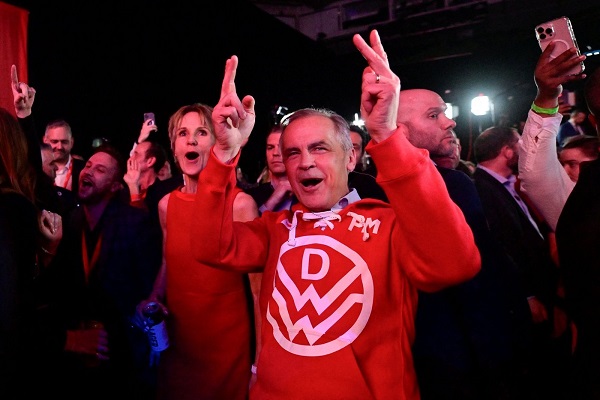
With the Americans winning the first game 3-1, a sense of panic crept over Canada as it headed to Game 2 in Boston. Losing a political battle with Trump was bad enough, but losing hockey bragging rights heading into a federal election was catastrophic for the Family Compact.
“It’s also more political than the (1972) Summit Series was, because Canada’s existence wasn’t on the line then, and it may be now. You’re damn right Canadians should boo the (U.S.) anthem.” Toronto Star columnist Bruce Arthur before Gm. 1 of USA/ Canada in The 4 Nations Cup.
The year 2025 is barely half over on Canada Day. There is much to go before we start assembling Best Of Lists for the year. But as Palestinian flags duel with the Maple Leaf for prominence on the 158th anniversary of Canada’s becoming a sovereign country it’s a fair guess that we will settle on Febuary 21 as the pivotal date of the year— and Canada’s destiny as well.
That was the date of Game 2 in the U.S./Canada rivalry at the Four Nations Tournament. Ostensibly created by the NHL to replace the moribund All Star format, the showdown of hockey nations in Boston became much more. Jolted by non-sports factors it became a pivotal moment in modern Canadian history.
Set against U.S. president Donald Trump’s bellicose talk of Canada as a U.S. state and the Mike Myers/ Mark Carney Elbows Up ad campaign, the gold-medal game evoked, for those of a certain age, memories of the famous 1972 Summit Series between Canada and the USSR. And somehow produced an unprecedented political reversal in Canadian elections.
As we wrote on Feb. 16 after Gm. 1 in Montreal, the Four Nations had been meant to be something far less incendiary. “Expecting a guys’ weekend like the concurrent NBA All Star game, the fraternal folks instead got a Pier Six brawl. It was the most stunning beginning to a game most could remember in 50 years. (Not least of all the rabid Canadian fanbase urging patriotism in the home of Quebec separation) Considering this Four Nations event was the NHL’s idea to replace the tame midseason All Star Game where players apologize for bumping into each other during a casual skate, the tumult as referees tried to start the game was shocking.
“Despite public calls for mutual respect, the sustained booing of the American national anthem and the Team Canada invocation by MMA legend Georges St. Pierre was answered by the Tkachuck brothers, Matthew and Brady, with a series of fights in the first nine seconds of the game. Three fights to be exact ,when former Canuck J.T. Miller squared up with Brandon Hagel. (All three U.S. players have either played on or now play for Canadian NHL teams.)
“Premeditated and nasty. To say nothing of the vicious mugging of Canada’s legend Sidney Crosby behind the U.S. net moments later by Charlie McEvoy.”
With the Americans winning the game 3-1 on Feb. 15, a sense of panic crept over Canada as it headed to Game 2 in Boston. Losing a political battle with Trump was bad enough, but losing hockey bragging rights heading into a federal election was catastrophic for the Family Compact. As we wrote in the aftermath, a slaughter was avoided.

“In the rematch for a title created just weeks before by the NHL the boys stuck to hockey. Anthem booing was restrained. Outside of an ill-advised appearance by Wayne Gretzky— now loathed for his Trump support— the emphasis was on skill. Playing largely without injured Matthew and Brady Tkachuk and McAvoy, the U.S. forced the game to OT where beleaguered goalie Craig Binnington held Canada in the game until Connor McDavid scored the game winner. “
The stunning turnaround in the series produced a similar turnaround in the Canadian federal election. Galvanized by Trump’s 51st State disrespect and exhilarated by the hockey team’s comeback, voters switched their votes in huge numbers to Carney, ignoring the abysmal record of the Liberals and their pathetic polling. From Pierre Poilievre having a 20-point lead in polls, hockey-besotted Canada flipped to award Carney a near-majority in the April 28 election.
The result stunned the Canadian political class and international critics who questioned how a single sporting event could have miraculously rescued the Liberals from themselves in such a short time.

While Canada soared because of the four Nations, a Canadian icon crashed to earth. “Perhaps the most public outcome was the now-demonization of Gretzky in Canada. Just as they had with Bobby Orr, another Canadian superstar living in America, Canadians wiped their hands of No. 99 over politics. Despite appeals from Orr, Don Cherry and others, the chance to make Gretzky a Trump proxy was too tempting.
We have been in several arguments on the subject among friends: Does Gretzky owe Canada something after carrying its hockey burden for so long? Could he have worn a Team Canada jersey? Shouldn’t he have made a statement that he backs Canada in its showdown with Trump? For now 99 is 0 in his homeland.”
Even now, months later, the events of late February have an air of disbelief around them, a shift so dramatic and so impactful on the nation that many still shake their heads. Sure, hockey wasn’t the device that blew up Canada’s politics. But it was the fuse that created a crater in the country.
Bruce Dowbiggin @dowbboy is the editor of Not The Public Broadcaster A two-time winner of the Gemini Award as Canada’s top television sports broadcaster, his new book Deal With It: The Trades That Stunned The NHL And Changed hockey is now available on Amazon. Inexact Science: The Six Most Compelling Draft Years In NHL History, his previous book with his son Evan, was voted the seventh-best professional hockey book of all time by bookauthority.org . His 2004 book Money Players was voted sixth best on the same list, and is available via brucedowbigginbooks.ca.
-

 Alberta2 days ago
Alberta2 days agoAlberta Provincial Police – New chief of Independent Agency Police Service
-
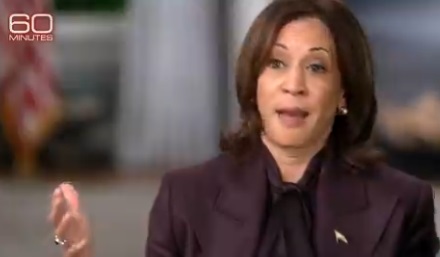
 International2 days ago
International2 days agoCBS settles with Trump over doctored 60 Minutes Harris interview
-

 Business2 days ago
Business2 days agoWhy it’s time to repeal the oil tanker ban on B.C.’s north coast
-

 Energy2 days ago
Energy2 days agoIf Canada Wants to be the World’s Energy Partner, We Need to Act Like It
-

 Alberta2 days ago
Alberta2 days agoPierre Poilievre – Per Capita, Hardisty, Alberta Is the Most Important Little Town In Canada
-

 Aristotle Foundation2 days ago
Aristotle Foundation2 days agoHow Vimy Ridge Shaped Canada
-

 Alberta1 day ago
Alberta1 day agoAlberta uncorks new rules for liquor and cannabis
-

 Canadian Energy Centre2 days ago
Canadian Energy Centre2 days agoAlberta oil sands legacy tailings down 40 per cent since 2015


